The jury will be interviewing these amazing artists who have made it to the next round to select six to eight finalists for the Connective Corridor’s $650,000 call for public art – a partnership with Syracuse University’s College of Visual and Performing Arts.
Join us, May 5 from 10 a.m. to noon at the SU Warehouse, fourth floor conference room, for a public outreach session and be part of the process. Come learn more about the artists, see and evaluate their work. Talk about where you’d like to see public art along the Corridor. Help develop questions for the jury when they conduct interviews in mid-May. Talk about how these artists can engage the local arts community as part of the collaborative process. Give us your ideas and input!
 Here’s a quick look at the semi-finalists, in alphabetical order. Art samples depict previous work and not proposals for this public art call. The finalists who are selected will work with the local community to collaboratively develop their final proposals and site their work. That’s where some really exciting engagement will happen, and we want your involvement.
Here’s a quick look at the semi-finalists, in alphabetical order. Art samples depict previous work and not proposals for this public art call. The finalists who are selected will work with the local community to collaboratively develop their final proposals and site their work. That’s where some really exciting engagement will happen, and we want your involvement.

 Here’s a quick look at the semi-finalists, in alphabetical order. Art samples depict previous work and not proposals for this public art call. The finalists who are selected will work with the local community to collaboratively develop their final proposals and site their work. That’s where some really exciting engagement will happen, and we want your involvement.
Here’s a quick look at the semi-finalists, in alphabetical order. Art samples depict previous work and not proposals for this public art call. The finalists who are selected will work with the local community to collaboratively develop their final proposals and site their work. That’s where some really exciting engagement will happen, and we want your involvement.
Here are the 16 semi-finalists:
Osman Akan, Brooklyn, NY (www.osmanakan.com) works in stainless steel, dichroic glass, HID lights and white concrete. With a MFA from the California Institute of the Arts, Valencia, CA and a BFA from Bilkent University’s Department of Art and Architecture, Ankara, Turkey, he’s been featured in the New York Times, Trendsetter Magazine and Sculpture Magazine. He exhibited most recently at the Dag Hammarskjold Plaza as part of the 70th celebration of the UN, and has installations in Brazil and Hong Kong. Regionally, his work can be seen at the new Nanocenter at SUNYIT. His work integrates natural and artificial light, playing off reflective and refractive qualities of various materials and aspects of human perception such as perspective. “I am interested in the Connective Corridor project because of its size and multi-cultural associations,” says Osman. “In New York, we have the Highline project to gain green space and activate an area for public use. As an artist, I am interested in large public projects such as these because of their effect on the public domain.”
Tristan Al-Haddad, Atlanta, GA (www.formations-studio.com) works in steel, aluminum and high performance concrete, mirrored stainless and polycarbonate. An assistant professor in the School of Architecture at The Georgia Institute of Technology, he has a Master of Architecture degree from Georgia Tech and has also studied at the University of Paris and the Center for Building Technology and Urban Design in Genoa, Italy. His work has been featured at the Centre Pompidou in Paris, the High Museum of Art in Atlanta, and the Boston Center for the Arts, as well as the AIA Center for Architecture in New York City. He has been recognized in the New York Times, Metropolis, and has been a Fulbright Scholar in Chile. “The Connective Corridor projects represents an extraordinary opportunity to create profound works of art that can operate in so many modes,” says Tristan. “On one hand, the project will serve as an aesthetic work to be visually consumed and experientially relished, and on the other hand, it will serve as an extension of the urban fabric itself.”
Volkan Alkanoglu, Atlanta, GA (www.alkanoglu.com) works in anodized aluminum, high density polyethylene, timber and steel. With a Master’s of Architectural degree from University College, London and a Diploma of Architecture from Peter Behrens School in Dusseldorf, he is also a U.S. GBC LEED accredited professional. He has worked at firms in London and NYC, and created award winning projects for the National Library in Prague and the Venice Architecture Biennial, among other cities around the world. He has taught at the Harvard School of Design and Princeton, and is currently working on projects in the US, Europe and Middle East. “If considered, we would work towards an iconic, sustainable and inspiring art project which creates a sense of place and identity for the area and community,” says Volkan.
Konstantin Dimopoulos, Melbourne, Australia (www.kondimopoulos.com) works in high performance composites and reinforced concrete. A native of Egypt and raised in New Zealand, he has degrees from Victoria University of Wellington and the Chelsea School of Art, London. He has created many commissioned sculptures for both private and public collections in Edmonton, San Diego, Seattle, Denver, Boston, Abu Dhabi and across Australia. “What particularly attracts me to this project is that it allows me to create not just a sculpture, but an idea that moves through various sites and ties them together, and brings a unity of form to the Corridor,” says Konstantin. “The word ‘Connective’ is critical to the project – the connection to this place and the people who reside in it. I am interested in exploring the concept of movement through the Corridor and reinterpreting that movement through light and color.”
Sharon Exley, Chicago, IL (www.architectureisfun.com) works in lighting and projections, as well as interactive public art. Sharon and her partner Peter Exley are known for artful collaboration, creativity and a passion for play. The Exleys propose to partner with Dear Productions, an architectural lighting design firm that produces large-scale public space installations, including projects in Millennium Park in Chicago. Sharon and Peter have done more than 180 projects for clients such as the J. Paul Getty Museum, MoMA and Chicago Children’s Museum, as well as international work. Peter is a faculty member of the Art Institute of Chicago was the president of the American Institute of Architects, Chicago. “We see the Connective Corridor as a series of projects, each a destination,” says the team who envisions creating, “reactive works of art, light, sound and context sculpting immersive experiences.”
Marc Fornes, Brooklyn, NY (www.theverymany.com) works in painted aluminum. A TED Fellow, he has a Master of Architecture and Urbanism degree from the Design Research Lab of the Architectural Association in London, after previously studying in France and Sweden. Marc’s work includes large-scale, highly organic structures situated between the field of art and architecture, which are featured in installations at the Centre Pompidou in Paris, the FRAC Center in Orleans, France, and at the Guggenheim. He has been a resident artist at the Altier Calder, and co-started a graduate studio at Columbia University. He is currently teaching studio classes at Princeton and Harvard. “The conditions at work at the Connective Corridor provide an exciting opportunity to explore the positive influence of public art as a means to enrich a sense of identity and community for the City of Syracuse and create a long-lasting asset in line with the project’s vision and goals,” says Marc. “Collaborations between artists/designers and the community at large are means of developing ownership over common space, and catalyze dynamic and socially rich environments.”
DeWitt Godfrey, Earlville, NY (http://www.dewittgodfrey.com) works in corten steel and bolts. An accomplished public artist who has completed large-scale commissions for museums and universities, his work has been featured at the Downtown Arts Center in Lexington, KY, Decordova Museum in Lincoln, MA, and the Kennedy Art Museum in Athens, OH, as well as at Colgate and Hamilton Universities, and Cazenovia, Mt. Holyoke, Amherst and Lehman Colleges. With a MFA from the School of Sculpture, Edinburgh College of Art and BA in Art from Yale, he is interested in the role art can play in community, helping re-experience the familiar in the urban environment. “The Connective Corridor project excites me because of the possible range of sites and the exciting physical parameters present there, says DeWitt. “The opportunity for interaction with buildings and landscape are unprecedented in my experience. As a Central New York resident, I am familiar with Syracuse and the current initiatives to revitalize downtown, such as the ways Steve Power’s murals have already transformed otherwise neutral railway overpasses.”
Blessing Hancock, Tucson, AZ (www.blessinghancock.com), works in stainless steel, acrylic, LED lighting and touch sensitive electronics. Her work can be seen in Washington Park, MD, Aurora, CO, Brooklyn Park, MN, San Antonio, TX, Oklahoma City, OK, Denver, CO, Palo Alto, CA, Portland, OR, Dallas, TX, Shreveport, LA, Alberta, Canada, and Chengdu, China. Many of her installations enliven public spaces integrated within public transit systems – rail and light rail lines, pedestrian bridges, municipal parking garages, boulevards, bike paths, and underpasses, giving her experience working with community groups and municipal agencies. She has also installed works at public parks, universities and libraries and hospitals, and her installations are known for their interactive qualities. A former landscape architect, she focuses on large public spaces as social gathering spaces enlivened by light as a connective thread. “There is enormous potential for public art skillfully integrated along the Connective Corridor,” says Blessing, “and I’d love to be a creative force behind this venture. The cultural and historical richness of the area and the vibrancy of the Corridor are incredibly compelling.”
-
Wesley Heiss and Marek Walczak, Allentown, PA (www.walczakheiss.com) work in steel, camera recognition software, LED strips, reflective materials, screens, electronics, and optics. With degrees from the School of Architecture, London and Cooper Union School of Architecture, their work has been shown in Sweden, Korea, Beijing, Copenhagen, London, Austria and at several shows at the Whitney Museum of American Art and MOMA, New York. Commissions include work at the Jewish Museum of Heritage, Cooper Hewitt National Design Museum, 7 World Trade Center, Walter Art Center, and the Walker Arts Center. Other major projects are the Glass Atrium at the Austin Convention Center, work for the 2000 Olympics in Sydney, Australia and Circo’s Plaza in Shanghai, China. “Walczak & Heiss would be delighted to be considered as public artists for the Connective Corridor. We produce time-based interactive sculptural installations, using a range of strategies and technologies … and it is this type of fresh, playful and interactive work we hope to create for Syracuse.”
B.J. Krivanek, Chicago, IL and Joel Breaux, Loreauville, LA (www.krivanek-breaux.com) work in steel, aluminum, fiberglass and motion activated lighting. As public artists and designers, Krivanek+Breaux works have been funded by the National Endowment for the Arts and many urban cultural affairs offices in Los Angeles, Phoenix, Chicago and Seattle. They have done streetscape and transit work that includes responsive structures, interactive installations, digital experiential spaces, and building façade activation for cities across the U.S. Their expertise is contextual public art, siteworks and artwork systems that enhance the experience of civic environments. “We believe that public art can clarify and interact with natural and built environments, integrating the languages of architecture and technology with the lost languages and histories of communities,” says the team. “The many different urban spaces, sequences and contexts within the Connective Corridor would invite a myriad of conceptual and artistic approaches.
Jen Lewin, Boulder, CO (www.jenlewinstudio.com) works in custom cast plastic, aluminum, vintage Edison bulbs, LEDs and circuitry. An internationally renowned light and interactive sculptor, Jen fabricates large-scale interactive sculptures that combine light, sound and motion to encourage community interaction. Incorporating responsive sound and light forms, her use of technology challenges popular conceptions of new media – focusing on pieces for public use that bring vibrancy to neighborhoods and public spaces, engaging users in the works. Her work has been featured in National Geographic, The Smithsonian, Wired, The New York Times and BBC news. With degrees from New York University, she’s been the Creative Director for the Ivee Project at The Sundance Laboratory for Advanced Computing in Design and ITN (Saber) in Palo Alto. “The Connective Corridor is a wonderful example of creative placemaking,” says Jen. “Its connection to the diverse community that regularly merges but rarely interacts is an opportunity to revitalize and energize.”
Elena Manferdini, Venice, CA (www.aterliermanferdini.com) works in CNC wood and laser cut styrene as well as powder coated aluminum and steel cables. A native of Bologna, Italy, she explores the relationship between nature, technology and audience in public settings based on playfulness, optical effect and perception. Her works have been installed at the Art Institute of Chicago, Istanbul Biennial, Los Angeles Municipal Gallery, MAXXI, Rome, Beijing Biennale, Gwangju Biennale in Korea, LA Museum of Contemporary Art, Museum of Art at Seoul National University, Seika University in Kyoto, and the International Architecture Biennale in Venice, as well as public spaces in the U.S. “I am extremely hands on, precise and understand the kind of care a public project requires,” says Elena. Her goal is to bring a multidisciplinary team to create “integrated artwork with dynamic and visually engaging outcomes” and “collaboratively design technically-demanding and geometrically articulated public work.”
Erwin Redl, Bowling Green, OH (www.paramedia.net) works with suspended light panels integrated with animated RGB-LEDs, and computer controlled light installations. A native of rural Austria, he has a BA in Composition and Electronic Music from the Music Academy of Austria, and a MFA in Computer Art from the School of Visual Arts, NYC. He’s been a guest artist in residence in the Czech Republic and contemporary arts centers in the U.S. Among his recent installations are the Central Subway Union Square / Market Street Station in San Francisco, Interstate 77 Underpass project in Charlotte, NC, Pacific Design Center, West Hollywood, New York Police Academy in Queens, and the Austrian Pavilion at the World Expo in Zaragoza, Spain. He has had numerous solo exhibitions across Europe and the U.S. “The Connective Corridor relates directly to a public art installation for the I-77 Underpass, which created a volume of light in an urban area that formerly was seen as a barrier between the 3rd Ward and Biddleville/Wesley Heights,” says Erwin. “Distinct social encounters in a public space are hard to express by traditional sculptural means. My background in music composition, computer art and light installation, each with their abstract algebraic poetry shape the corporeal-social experience of space.”
Vicki Scuri, Lake Forest, WA (www.vicikscuri.com) works in light, steel, concrete, stone and native plants. With a BA in Fine Arts from UC Berkeley and MFA from UW, Madison, WI, she has won numerous engineering and design awards for multimodal projects across the U.S. that include pedestrian links and trails, transit shelters, medians, streetscapes, gateway bridges and infrastructure walls. Her community-inspired approach integrates functionality with public art, reflecting place, heritage, imagination, environment and community identity. She has developed public art master plans for communities that promote economic development through the arts, and has won CODAworx Top 100 projects for her work. “I am interested in participating in the Connective Corridor because my work focuses on the integration of infrastructure, landscape and community identity, promoting awareness of place and environmental stewardship,” says Vicki. “I’d like the opportunity to work with you and the Syracuse community on your green streets project.”
Sam Van Aken, Syracuse, NY (www.samvanaken.com), works with varied media but is best known for his iconic Tree of 40 Fruit which was featured in media around the world including Smithsonianmag.com, Time Magazine, World News, NPR Weekend Edition, Guardian UK, Huffington Post, Good Morning America, Epicurious, and Food and Wine. With a MFA from the University of North Carolina, Chapel Hill and a BA in Fine Art from Slippery Rock University, he is widely published and has been the recipient of numerous national residences and awards. His public collections and permanent installations can be seen at Thompson Point, Maine, Colby College, Maine, The West Collection, Philadelphia and at Syracuse University, among other places. He is currently working on commission for the San Jose Children’s Discovery Museum, County of London, UK, City of Dubai, City of Singapore and Parallax Partners, New Hampshire. Sam is an Associate Professor of Art and Graduate Program Coordinator for SU’s School of Art, which is part of the College of Visual and Performing Arts. He is a frequent lecturer and has been a popular TEDxManhattan speaker. “As the Tree of 40 Fruit project originated and was developed in Syracuse and the Central New York Region, the realization of a grove of these trees would be the true culmination of this internationally recognized project,” says Sam. “Sited in a single location, or placed along the Connective Corridor, my hope is that in some small way they could function like the cherry trees of Washington DC in becoming a destination. It would be an honor, a privilege, and the realization of a dream to bring this project home in such a dramatic fashion, and I am enthusiastic to work with the panel, the community and the Connective Corridor to make this possible.”
Christopher Weed, Colorado Springs, CO (http://www.chrisweed.com), works in powder coated steel and stainless steel tubing, cables and rods. A native of Philadelphia, he graduated with a BFA from the University of Maryland after two years of studying in Germany. He is included in collections in Munich, Frankfurt, Berlin, NYC, San Francisco, LA, Miami, and Seattle and has installations that are part of public art collections across Colorado. His most recent work was titled, “Connection,” illuminated with RGB LEDs, which connects a corridor in Colorado that is the largest thoroughfare in the country. He just completed a very competitive commission for a Regional Transportation District (RTD) in Denver – a new light rail project that spanned three municipalities. “I create public art that overwhelms the observer using size, variation and multiplicity of elements, visually inspiring a sense of awe,” says Christopher. “I propose creating iconic, thought-provoking public art that acts as a gateway and landmark for the Connective Corridor.”




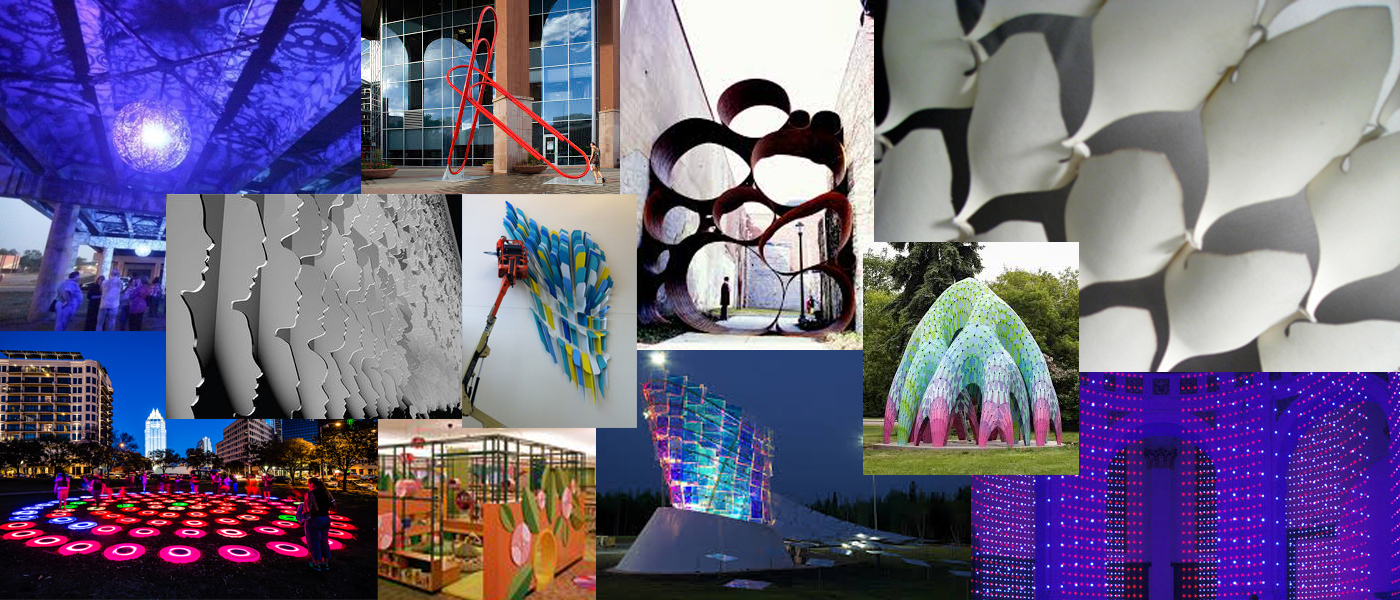
![osman akan[1]](http://syracusenewtimes.com/wp-content/uploads/2015/04/osman-akan1.jpg)
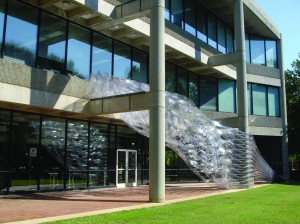

![Konstantin Dimopoulos[2]](http://syracusenewtimes.com/wp-content/uploads/2015/04/Konstantin-Dimopoulos2-300x200.jpg)
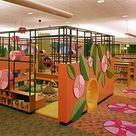
![Marc Fornes[2]](http://syracusenewtimes.com/wp-content/uploads/2015/04/Marc-Fornes2.jpg)
![DeWitt Godfrey[2]](http://syracusenewtimes.com/wp-content/uploads/2015/04/DeWitt-Godfrey2.jpg)
![Blessing Hancock[4]](http://syracusenewtimes.com/wp-content/uploads/2015/04/Blessing-Hancock4-300x187.jpg)
![Wesley Heiss[20]](http://syracusenewtimes.com/wp-content/uploads/2015/04/Wesley-Heiss20.jpg)
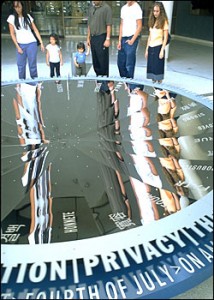
![Jen Lewin[2]](http://syracusenewtimes.com/wp-content/uploads/2015/04/Jen-Lewin2-300x200.jpg)
![Elana Manferdini[17]](http://syracusenewtimes.com/wp-content/uploads/2015/04/Elana-Manferdini17-225x300.jpg)
![Erwin Redl[14]](http://syracusenewtimes.com/wp-content/uploads/2015/04/Erwin-Redl14-300x205.jpg)
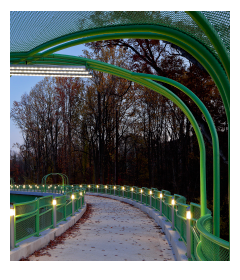
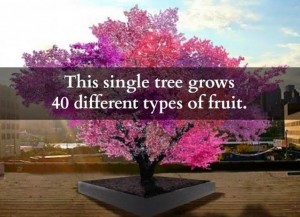
![Christopher Weed[2]](http://syracusenewtimes.com/wp-content/uploads/2015/04/Christopher-Weed2.jpg)





